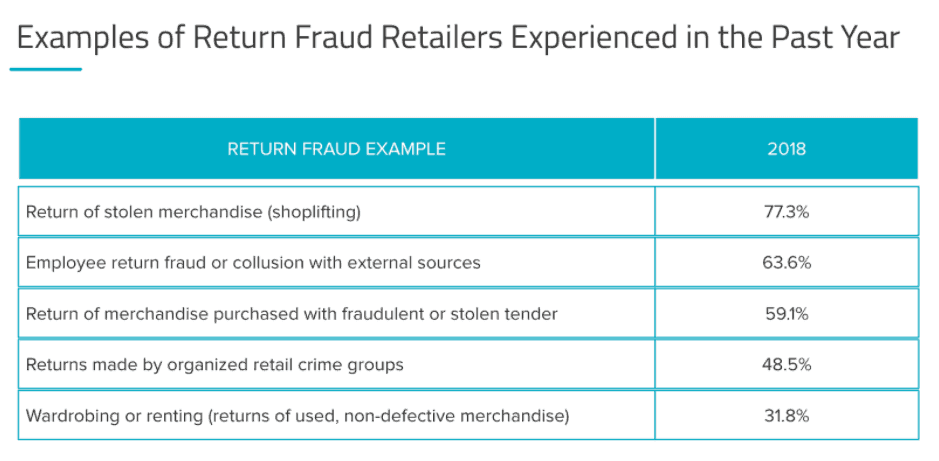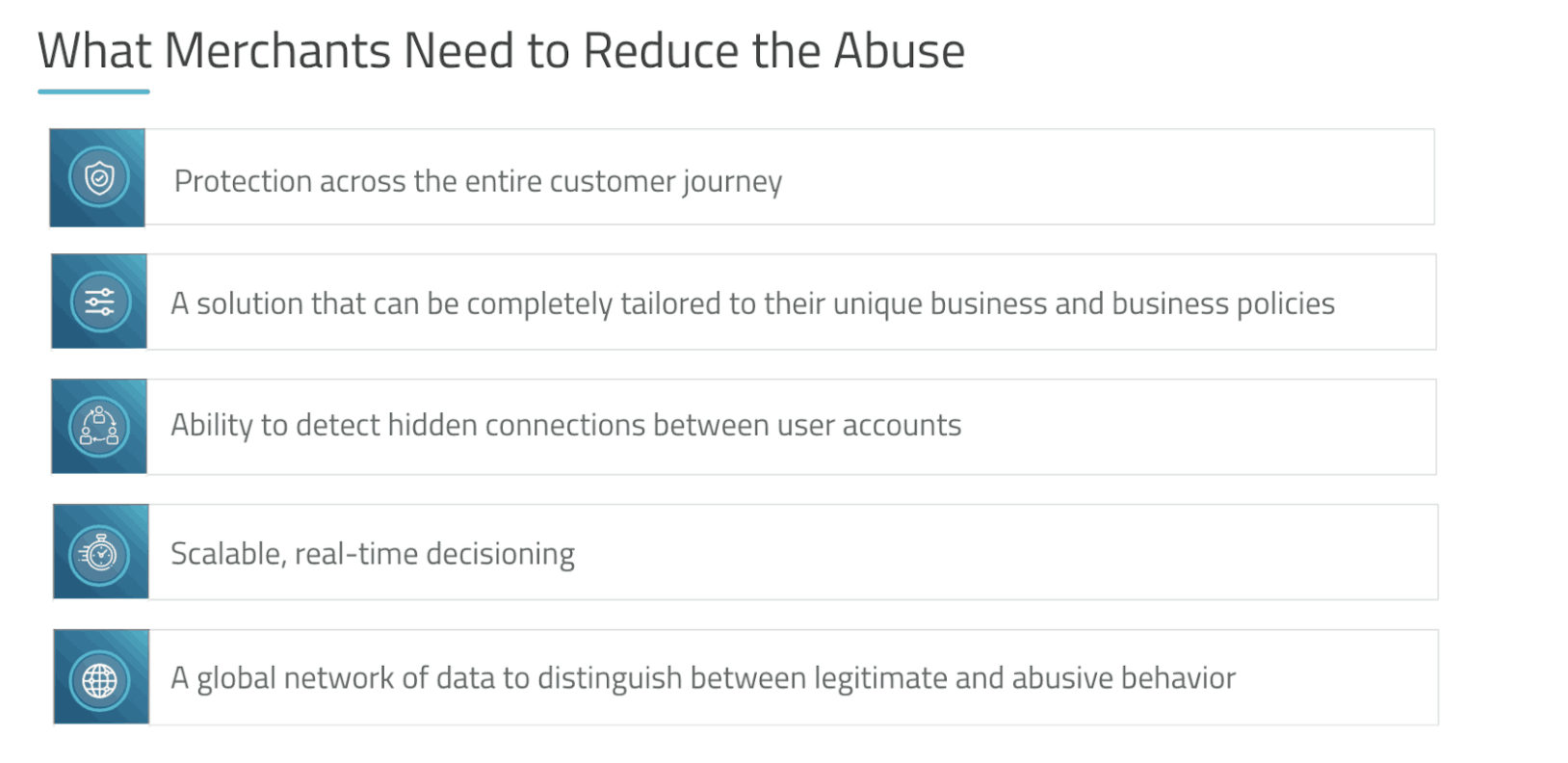During Forter’s Next in Commerce four-part webinar series, we have been showcasing new learnings and insights on the topic of Returns Abuse from a variety of different perspectives. Our second session featured Josh Behr, Director of E-Commerce & Digital Marketing at Amerex Group to discuss the changing retail environment amid the outbreak of Coronavirus (COVID-19) and how merchants are adapting their business and policies to meet consumers’ expectations.
During our most recent session, I sat with Tom Rittman, VP of Marketing at Appriss Retail, a data science company that helps prevent in-store fraud and loss for retail stores.
Our full conversation can be found here, but during our session we covered:
- The overall cost of returns for retailers in the US
- The most common forms of returns abuse and fraud US retailers are experiencing
- Best practices to reduce returns and abuse, and shrink financial losses
In partnership with the National Retail Federation (NRF), Appriss releases a yearly survey which reflects upon Merchandise Returns and Returns Fraud for retailers.
This year, the survey revealed:
| NRF 2019 Annual Industry Sales $3.8 Billion |
Total Returns $309 Billion |
Fraudulent Returns $27 Billion |
| Online Returns
$41 Billion (from sales generated online) |
Fraudulent Returns In-Store
$1.6 Billion |
Fraudulent Returns to Non-Store Location
$0.4 Billion |
Why Should Retailers be Concerned with Returns?
- A return is a lost sale. Cash, profits, and margin percentage are reduced.
- Returns increase labor costs due to inspection and restocking time.
- Higher returns require more working capital to source merchandise.
- Returns cause markdowns, out-of-stocks, and logistics expenses to increase.
- Returns cannot always be resold.
Returns fraud and abuse continues to grow.
Appriss’ survey revealed that the amount of returns abuse has increased by 35% over calendar year 2018.
The most common examples of returns fraud include:
What Can Retailers Do to Better Protect Themselves?
The tension between offering customer-friendly returns offerings while accurately identifying and preventing abusive behaviors has proven a struggle for merchants. In order to ensure that they can offer a best-in-class customer experience while simultaneously preventing returns fraud and abuse from occurring, retailers need the right approach.
Appriss Retail & Forter
With Appriss & Forter, retailers can stop both in-store and online abuse and can provide a true omni-channel experience. Appriss real-time, predictive algorithms can identify and deter fraudulent return behavior in stores. Combined with Forter’s automated decisioning to identify, flag, and stop online abusers from placing more orders, you can better protect your business from abuse. For more information, please visit https://www.forter.com/returns-abuse-protection/.





